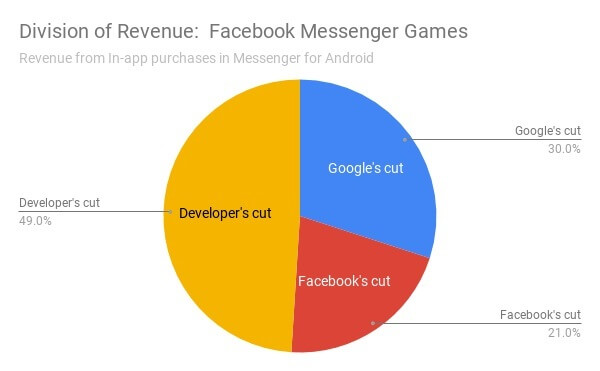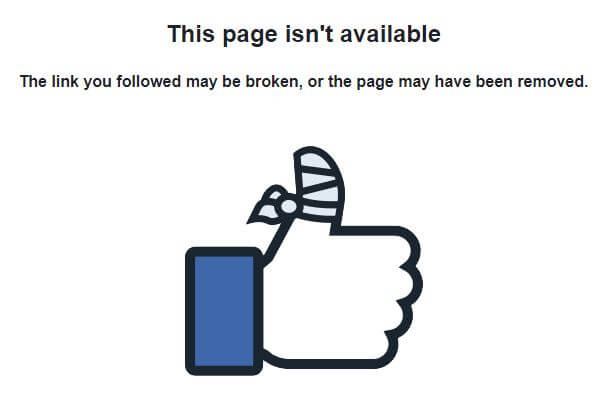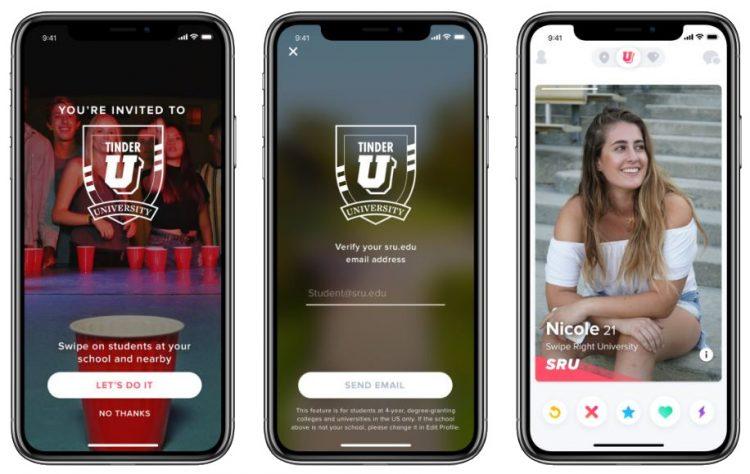#SocialRecap 17: Top Social News Updates + 6 Key Best Practices in Email Marketing
In the previous #SocialRecap, we saw a Twitter block list go viral when Alex Jones was able to keep tweeting through his suspended account, we discovered that Google has a dark side – and it continues to track our location history even after we tell it to stop, and we even found that 95% of DISinformation shared in social media by the Russian ‘Internet Research Agency’ actually originated from a US-based news site called Truthfeed.
This week, we’re taking a look at:
- How Facebook is giving up a piece of their revenue to incentivize game developers,
- The ad strategy that YouTube is implementing to motivate their video Creators,
- 6 key best practices for a successful email marketing campaign,
- Plus more news from social media, business, digital marketing & tech.
Connect your headphones and check out the top social news updates from this week’s #SocialRecap:
Not a good time to watch or listen? Just scroll down to find the highlights below!
Now, let’s start with some news from YouTube…
1. YouTube is Extending Non-Skippable Ads to ALL YouTube Creators
YouTube has decided to extend non-skippable ads to ALL YouTube Creators who are already able to monetize their videos. Since advertisers are often willing to pay Creators more when they make their ads non-skippable, it’s good motivation for YouTube Creators to continue making videos and for advertisers to keep buying ads – while YouTube gets a cut from each ad sale.

Non-Skippable Ad Guidelines
Non-skippable ads are limited to 20 seconds, and YouTube will also be introducing a new tool that lets Creators track metrics such as audience engagement and revenue flow from videos where those ads appear. And in anticipation of wide usage, the tool will also allow Creators to add & remove non-skippable ads in bulk – for both new and old videos.
This is one way for YouTube to convince their Creators to keep creating videos. Now, how is Facebook going to make sure that developers will keep developing games for Facebook?
By relinquishing a piece of the pie so that developers have more to gain.
2. Facebook Giving Cut of Revenue from Android Messenger Games Back to Developers
At the moment, Google takes a hard 30% of in-app purchase revenue from Android Facebook Messenger games. Previously, Facebook had also been taking 30% on TOP of Google’s initial 30% (about 21% of the total revenue), leaving developers with just about half of their revenue… which did not make it very appealing for them to spend too much time creating and supporting new games for Messenger.

With Facebook now giving up its 30%, the expansion of games for Messenger should be a little more sustainable. Facebook is giving up its share of the revenue for Android only, and just on mobile. It will still retain revenue from the web-version of Android games in Messenger.
3. Ad Archive API Launching on Facebook
And in an effort to improve ad transparency, especially for ads that may be related to politics and other issues of national importance, Facebook has decided to introduce Ad Archive API to select audiences. Researchers and journalists can apply for access to the new API, which will allow them to analyze key data and demographics from historical ads.
Facebook Ad Archive API includes access to information such as start & end dates for ads, creative and performance data, total ad spend and ad impressions, as well as demographics regarding the country, age and gender of audiences who have seen and interacted with these ads.
Right now, users have to apply for future access to Ad Archive API (this is the application form).

Ad Archive API will be open to a small selection of users at first, and Facebook will be asking for customer feedback from academic researchers with initial access to find out which types of data & information are the most important – before making the new API available to a wider audience.
4. First Official Facebook App Ban since Cambridge Analytica
And since the Cambridge Analytica data leak, Facebook has been continually making security-related updates and changes to their platform, as promised. Recently, this includes the first ban of an app since the giant data leak.

After a brief suspension, the “MyPersonality” app has officially been banned due to lax data controls. This may sound a bit familiar since, coincidentally, this is basically the same thing that Facebook itself appears to have been guilty of with Cambridge Analytica.
The “MyPersonality” app is a quiz app – just like the one from nametests.com and Cambridge Analytica. Only, the MyPersonality app was created by researchers at a real academic institution called the Cambridge Psychometrics Centre. The app was used to gather user information for studies at the Centre, where researchers could request access to it. However, when a near complete set of data was posted on GitHub by one of those very researchers (where anybody could download it), Facebook first suspended the app and requested an audit to examine their loose user data protection controls, and then banned it when they would not agree to the audit.
5. TuneMoji + Snap Kit Integration Brings Musical .GIFs to Snapchat
Now, what’s new with Snapchat? Well, Snap has just partnered up with TuneMoji to bring us musical .gifs that Snapchat users can share in Chats and Stories. This is possible due to TuneMoji’s latest integration with Snapkit.
The musical .gifs work similarly to Instagram’s own new-ish feature – music stickers – though they’re not quite ready yet. Impatient Snap users can access musical TuneMoji .GIFs now, but they would need to download both Snapchat AND TuneMoji, find the .gif on TuneMoji first, and then share it to Snapchat.
6. Tinder Launching Tinder U App – Just for College Students
And Tinder has decided to launch a version of its app that’s just for college students. The Tinder U app is designed to help students date, hook-up, and meet one another at school. To sign up, users have to be located on a college campus and be able to provide an .edu email address.

The Tinder U app will first be available on iOS to 4-year, accredited, nonprofit schools across the U.S. It will work just like the regular service, except that students will be using it to find other students – on their own campus, or those nearby. Launching an app just for college students may prove to be a good way for Tinder to increase the Customer Lifetime Value (CLV) of their user base by getting them to sign up at a younger age.
7. BONUS: Key Best Practices for a Successful Email Marketing Campaign
And speaking of user bases, according to a case study on the Smart Insights blog, one of the best ways to increase your user base is actually STILL through email marketing. And the key metric for a successful email marketing campaign isn’t your email open rate or your click-through-rate, it’s actually “deliverability”. Basically, if your emails aren’t being delivered to your subscriber’s main inbox, your statistics are going to be inaccurate and unreliable anyway.
The case study analyzed a sample of over 100 ecommerce websites, which included large well-known businesses like HP as well as much smaller businesses.
From these 100 ecommerce websites, 62% of businesses did not yet offer a business newsletter; only 1 e-mail landed in the Spam folder (indicating good overall deliverability); and 53% of emails ended up in the Promotions tab. Now, while Gmail’s Promotions tab might have a strong open rate, if you’re an ecommerce site that sends verification emails about purchases and deliveries, your customers would definitely prefer your emails to land in their main inbox.
What can cause emails to get labeled as Spam?
A common list of reasons includes: using a lot of words with all capital letters, using lots of exclamation marks, all image messages, your IP address reputation, and domain reputation. The case study analyzed a number of combinations and variations from the list of reasons to arrive at a few interesting conclusions:
6 Email Marketing Best Practices – Get Delivered to the Main Inbox
- Use a real email address as your reply-to address: If you fill in your reply-to email address as “noreply” or “do-not-reply”, your emails have a 0% chance of landing in the main inbox OR the spam folder – and a 14% chance of landing in the Promotions tab.
- Use some images, but not an all-image body: Using too many images will also result in your email getting classified as promotional, while not using enough images gets you classified as Spam. In the case study, emails with 9 images landed in Promotions, emails with 1 image got filtered as Spam, and those with 5 images made it to the main inbox.
- Include some links in your email: The same rule applies to links – emails with 18 links landed in the Promotions tab, those with 3 links were marked as Spam, and messages containing 10 links found themselves in the main inbox.
- Don’t use the percent sign or currency symbols: When sales symbols such as percentages % or currency signs $ £ ¢ ¥ were used in an email, the message was automatically filtered into the Promotions tab.
- Avoid sales vocabulary (at first): Words related to sales, such as ‘shop’, ‘promo code’, ‘coupon’ and ‘discount’ could also be detected. In the case study, emails with 5 mentions of sales words were sent to the Promotions tab, those with 1 mention of a sales word got filtered into the Spam folder, while messages with 3 mentions reached the main inbox.
- Say ‘thank you’: Although the Promotions Tab isn’t the worst place to end up, you can still improve your chances of future messages reaching the main inbox – especially for new subscribers – by following the email marketing best practices mentioned above, and not using too many sales words in your first couple of messages. Start by sending a confirmation welcome email or a special thank you message before you even consider mentioning ‘sales’, ‘discounts’ and ‘promo codes’.
- Bonus – ‘thank you’ emails also get opened more often: Hubspot’s look at email marketing found that even automated ‘thank you’ messages tend to have higher open & click-thru rates (CTR) at 42% & 14% than your typical marketing messages (which garnered a 12% open rate & 6% CTR, on average). It’s the small but powerful act of showing your customers and clients that you appreciate them.
Keep up with top social media news & digital marketing trends
Stay on top of changing trends in digital marketing, keep up with top news in social media, and follow recent developments in tech – all inside the #SocialRecap. Stay informed & put your knowledge to use by making sure your digital strategies can keep up with big changes and updates in social media!
Get your social media news the way YOU want it:
- Read about the latest highlights & trends in the #SocialRecap right here on the blog.
- Catch the MINI #SocialRecap on Facebook (just the headlines + a couple fun facts).
- Watch the FULL #SocialRecap on YouTube.
- Listen to the FULL #SocialRecap on Soundcloud.
Recommended for you
- #SocialRecap 16: How Alex Jones Inspired a Viral Twitter Block List, New Facebook Live Updates & More Social Media News!
- #SocialRecap 15: Tech Takes Over & Records Get Smashed in This Week’s Top 7 Social Media News Updates
- #SocialRecap 14: Over 58 Million Twitter Accounts Suspended, Movie Piracy on Facebook and More News!
Are there any other tools & topics that you want to hear about in the next #SocialRecap? Let us know and we’ll dig into it for you.
Tweet us or comment on any of the FB, YT or Soundcloud versions mentioned above – we’ll be listening.
And THANK YOU for catching up with us! 🙂
Related articles


![How To Do a Social Media Audit [9 Easy Steps]](https://brand24.com/blog/app/uploads/2022/03/social_media_audit_-600x335.webp)
![How to Conduct a Brand Audit? The 5 Step Guide [2025]](https://brand24.com/blog/app/uploads/2022/01/How-to-Conduct-a-Brand-Audit-_052022.png)
